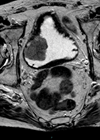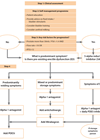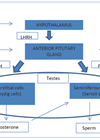Features
A negative ureteroscopy for stone disease: is it acceptable and is it avoidable?
Urinary tract stone disease and the consequent demand for endoscopic intervention in the upper urinary tract is an increasing phenomenon [1]. Although ureteroscopy is generally considered to be associated with low morbidity [2], risks do exist. Recognised complications include urothelial...
History of prostate biopsy – part 2
For Part 1 of this topic is available here. The major limitations of the transrectal ultrasound (TRUS) guided prostate biopsy (PBx) protocols are the risk of profound sepsis and the risk of persistently significant false negative rates, related to the...
The burning issue of urinary tract infections
Urinary tract infections (UTIs) occur when bacteria colonise and proliferate in the urinary tract. These are characterised by specific clinical symptoms (dysuria, suprapubic tenderness, urgency and urinary frequency) which commonly occur alongside the finding of bacteriuria. UTIs are common –...
Bladder carcinoma MRI
Bladder malignancy is one of the commonest malignancies of the renal tract, accounting for approximately 6% of male malignancy and 2% of female malignancy. The incidence increases with patient age with 70% of patients being over the age of 65...
Biomarkers in prostate cancer detection
Prostate cancer (PCa) is the second most common cancer in men with an estimated prevalence of 1.1 million worldwide in 2012. This heterogeneous disease resulted in approximately 307,000 deaths, making it the fifth leading cause of cancer-related death in men...
Dietary citrate substitution in urolithiasis patients
Stone formation is dependent on supersaturation of urinary salts and urinary crystal retention. Urinary promoters (protein aggregates, cell debris) and inhibitors (citrate, magnesium, urinary macromolecules such as glycosaminoglycans and proteins) are involved in the process of stone formation [1]. Hypocitraturia...
The medical management of LUTS/BPH – an update
For many years it has been recognised by both medical professionals and the general public that the development of lower urinary tract symptoms (LUTS) is highly prevalent and is predominantly age-dependent. Medical professionals understand that in men this is often,...
Neuromodulation for lower urinary tract dysfunction – an ICS update
Non-invasive and invasive electro-stimulation techniques have been extensively studied in the treatment of lower urinary tract and bowel dysfunction, including overactive bladder syndrome (OAB), non-obstructive chronic urinary retention, faecal incontinence and chronic pelvic pain. Currently, the most common indication for...
The management of renal calculi – Pt 2
Renal calculi can be managed according to four treatment options: conservative management, extracorporeal shock wave lithotripsy (ESWL), flexible ureterorenoscopy (FURS) and percutaneous nephrolithotomy (PCNL). Having addressed conservative management and ESWL in the last edition of Urology News, the second article...
Training to be a urologist: how risky is it?
The NHS and urology face challenging times in trying to provide quality patient care efficiently and economically. Urology trainees are experiencing conflicting pressures with a new contract, a challenging on-call system and changing training requirements in an overstretched, centralised service...
Catheters and incontinence after radical prostatectomy: Preparing (but not scaring) men
Every year about 6000 men in the UK undergo radical prostatectomy (RP) for treatment of prostate cancer [1]. Despite surgical advances, RP continues to be associated with significant side-effects including urinary incontinence (UI) [2]. Immediately following removal of the urinary...
Male infertility
Definitions Infertility is the inability of a sexually active, non-contracepting couple to achieve spontaneous pregnancy in one year [1]. About 15% of couples do not achieve pregnancy within one year and seek medical treatment for infertility. Semen parameters are standardised...











